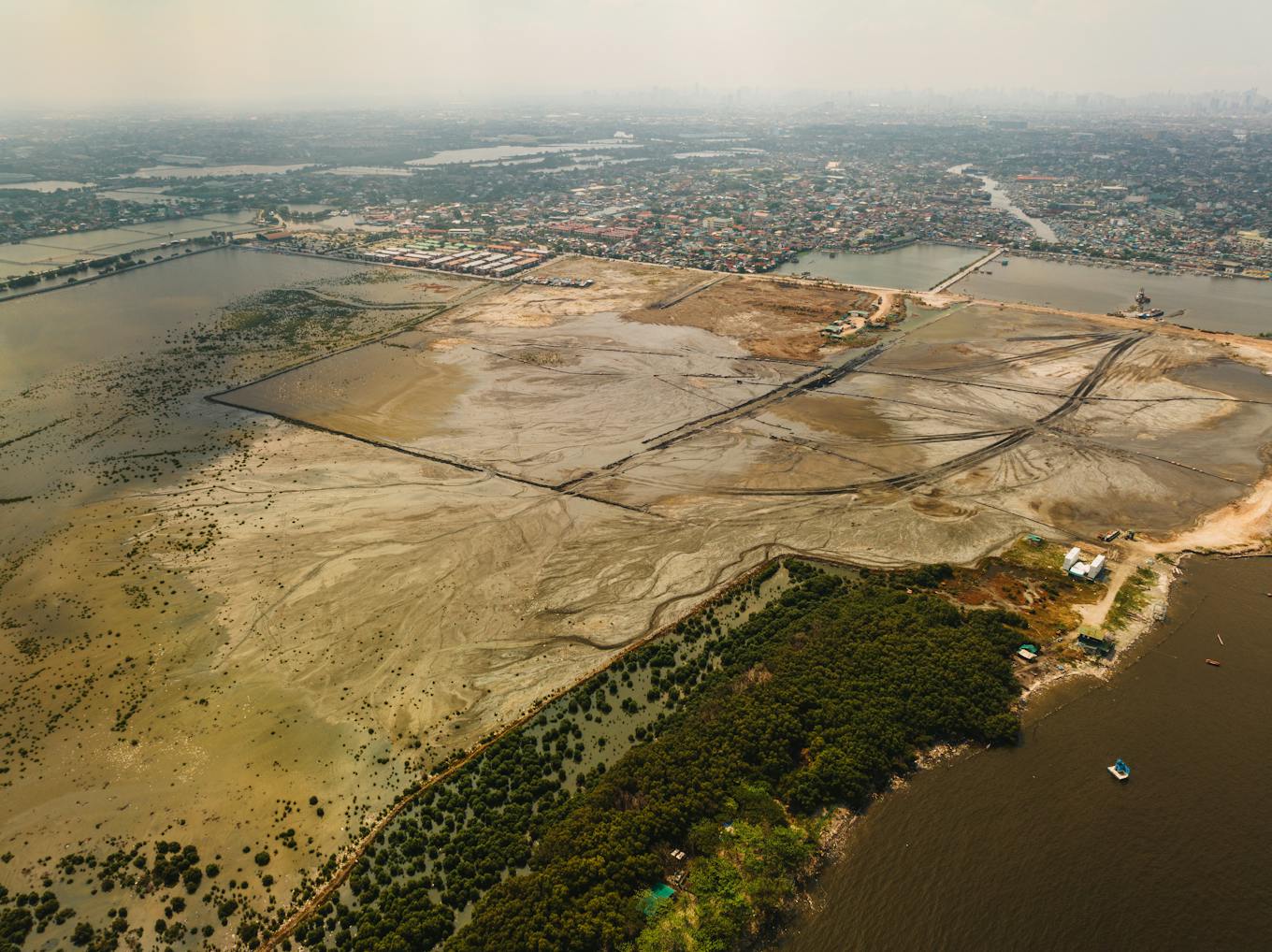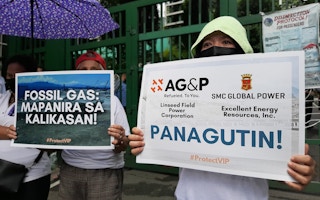Leaders of fisherfolk and farmer communities living near coal and gas plants owned by San Miguel Corporation (SMC) in the Philippines, called on stockholders of the company to cease its fossil fuel investments, ahead of its annual stockholders’ meeting (ASM) on Tuesday.
To continue reading, subscribe to Eco‑Business.
There's something for everyone. We offer a range of subscription plans.
- Access our stories and receive our Insights Weekly newsletter with the free EB Member plan.
- Unlock unlimited access to our content and archive with EB Circle.
- Publish your content with EB Premium.
SMC posted its highest‑ever net income of about US$772 million in 2022, almost 90 per cent higher than its 2020 loss of almost US$80 million, according to its annual report.
But in a letter addressed to shareholders, dated 9 June, community representatives wrote: “Amid positive financial reports and other highlights, we ask SMC’s good shareholders to keep in mind that the sustainability and performance of a company should not be measured by profit alone. It must also be weighed against the impact of its operations and investments on society.”
The document highlighted how SMC, through its subsidiary SMC Global Power (SMCGP), is one of the country’s biggest coal financiers, whose projects “have put the health of families at risk by exposing us to hundreds of thousands of tonnes of ash per project site annually, on top of other emissions which naturally result from burning coal.”
Frontline communities in Limay, Bataan have reportedly suffered respiratory infections, skin diseases, pneumonia, diarrhea, and hypertension from 2010 to 2015, during the construction and operation of the 600 megawatt (MW) coal facility in the province, said the letter signed by groups like Bacolod-based Association of Small Farmers in Purok Ilaya, Leyte-based Buho Fisherfolks Association, and backed by workers coalitions like Sanlakas, Partidong Lakas ng Masa, and the Protect Verde Island Passage network.

Children in communities surrounding San Miguel Corp’s Limay Coal Power Plant in Bataan, were recorded from 2010 to 2015 to have suffered from stomach pain, loose bowel movements and skin diseases among other ailments. Image: Coal Free Bataan Movement
SMC’s fossil gas expansion has also resulted in the destruction of a mangrove park in Navotas, in the northwest part of Metro Manila, and threatened marine life in the biodiverse Verde Island Passage in the southern part of the Luzon island group, added the letter.
The document also warned stockholders of the financial risks they are assuming with the continued investment in fossil fuels.
Last month, the government renewed the Malampaya gas-to-power project consortium to operate for another 15 years, even as the deal was set to expire next year, as reserves are expected to be depleted by 2027.
Nevertheless, with the loss of supply from the Malampaya plant, the country’s only domestic source of gas, SMC is adding more risk to its investments by relying on imported liquified natural gas (LNG) at a time when global supply is short and prices are volatile, noted the document.

Ongoing reclamation around the 650-hectare Tanza Mangrove Natural Park under threat from the planned liquified natural gas (LNG) plant owned by San Miguel Corp. in Navotas, Philippines. Image: Jilson Tiu
SMC’s energy subsidiary has been projected by a Bloomberg Intelligence report to have a funding shortfall for its annual lease with the government for existing coal plants for as high as US$1 billion within the month. Importing LNG also means adding to the risk of more fuel spills like what happened in Mindoro, when an SMC subsidiary reportedly chartered a ship that sank and leaked industrial oil, causing loss of livelihood for coastal communities. SMC has denied ownership of the charter.
“As shareholders of SMC, we believe that you are a key stakeholder in this matter and the Corporation is duty-bound to respond to concerns about these investments, especially as they increasingly become risks and liabilities for the company,” read the letter.
Eco-Business has reached out to conglomerate Top Frontier, the largest shareholder in SMC, but the company had not replied at the time of going to press.
Top Frontier, a company engaged in beverage, food, packaging, energy, oil, infrastructure and real estate, is led by Iñigo Zobel, a cousin of Jaime Zobel de Ayala, the patriarch of one of the Philippines’ richest families.
SMC, through its energy arm, controls 4,734 MW of the total national installed capacity, with 2,926 MW of this capacity fueled by coal. Because of these coal investments, SMC has faced protests from frontline communities, civil society organisations, and various groups for many years.
Despite the opposition, SMC has continued to propose and pursue another new coal project, like the 1,200 MW Mariveles Power Generation Corp Coal Fired Power Plant.
SMC also leads projected fossil gas expansion in the country, accounting for half of its planned gas development.
It has eight gas-fired power plants in the pipeline with a combined capacity of 14,100 MW, including the nearly-completed 1,750 MW gas-fired power plant by SMC Global Power Holdings Corp.’s subsidiary, Excellent Energy Resources Inc. (EERI). These projects are distributed across the country, including in Bataan, Batangas, Navotas, Negros Occidental, Cebu, Leyte and Zamboanga.
Want more Philippines ESG and sustainability news and views? Subscribe to our Eco-Business Philippines newsletter here.










